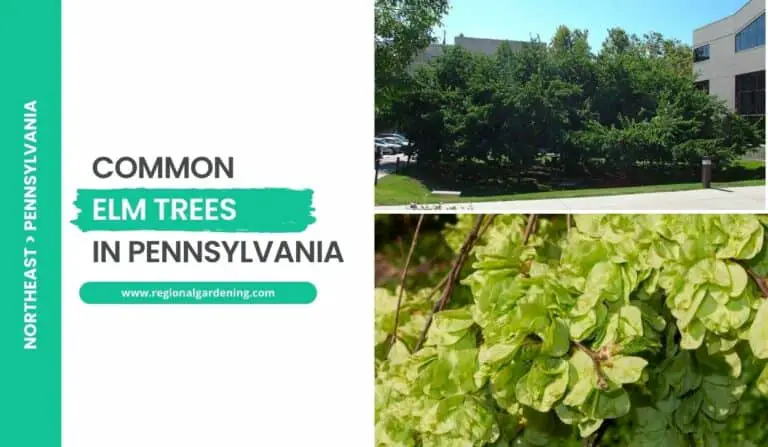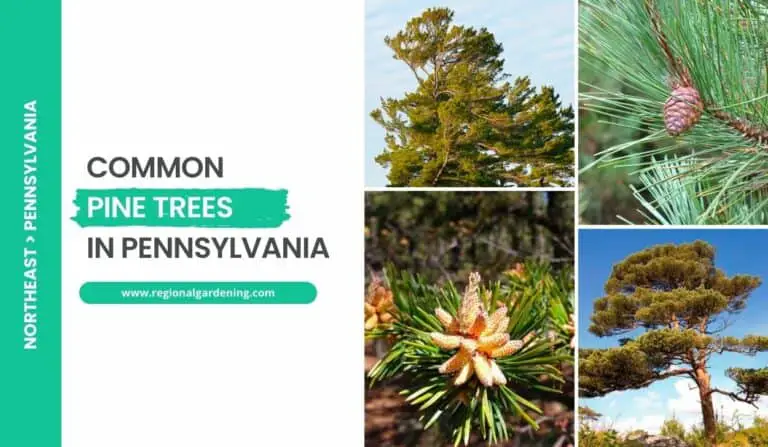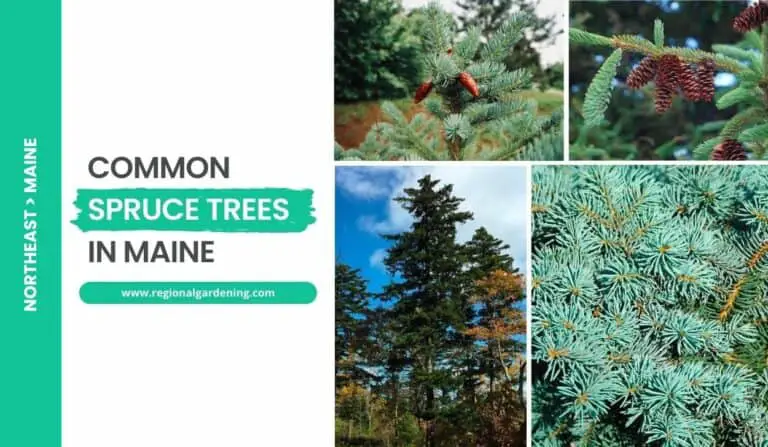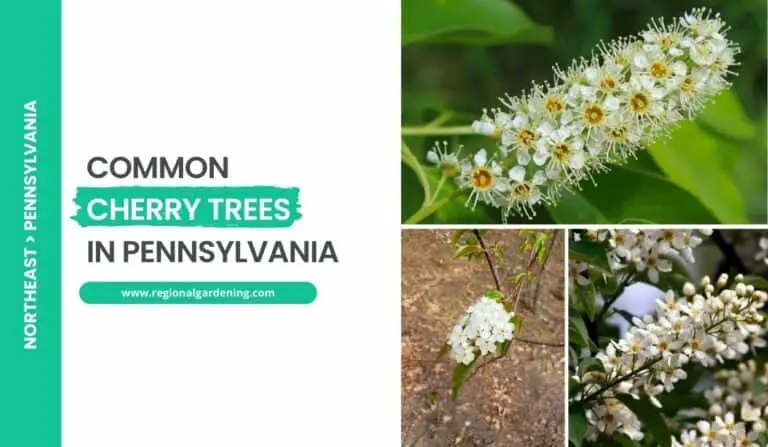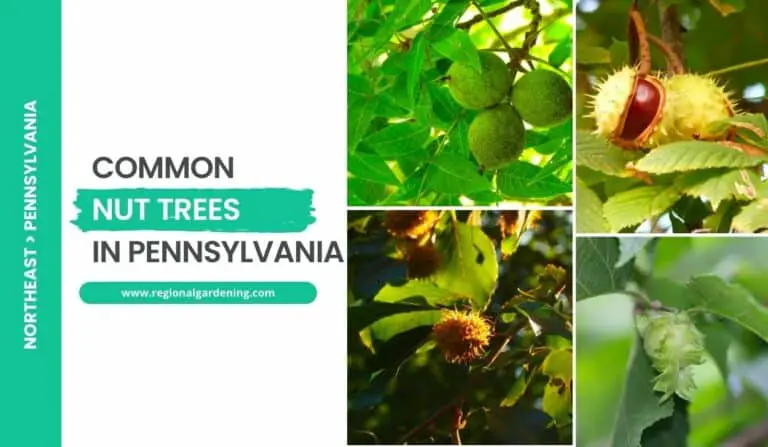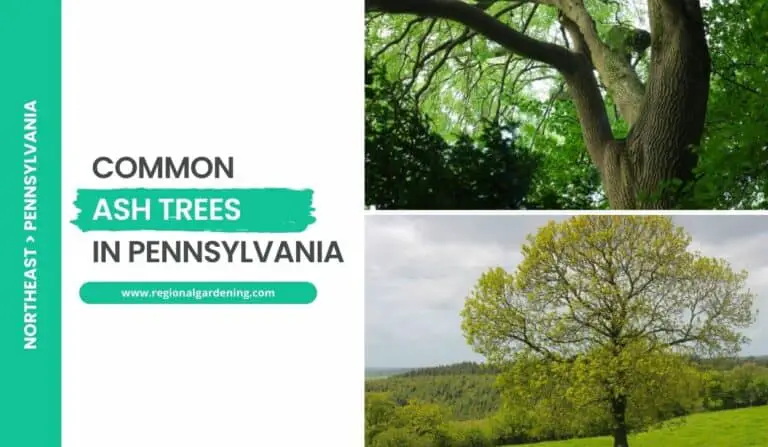2 Native Hickory Trees In Maine (Photos and Identification)
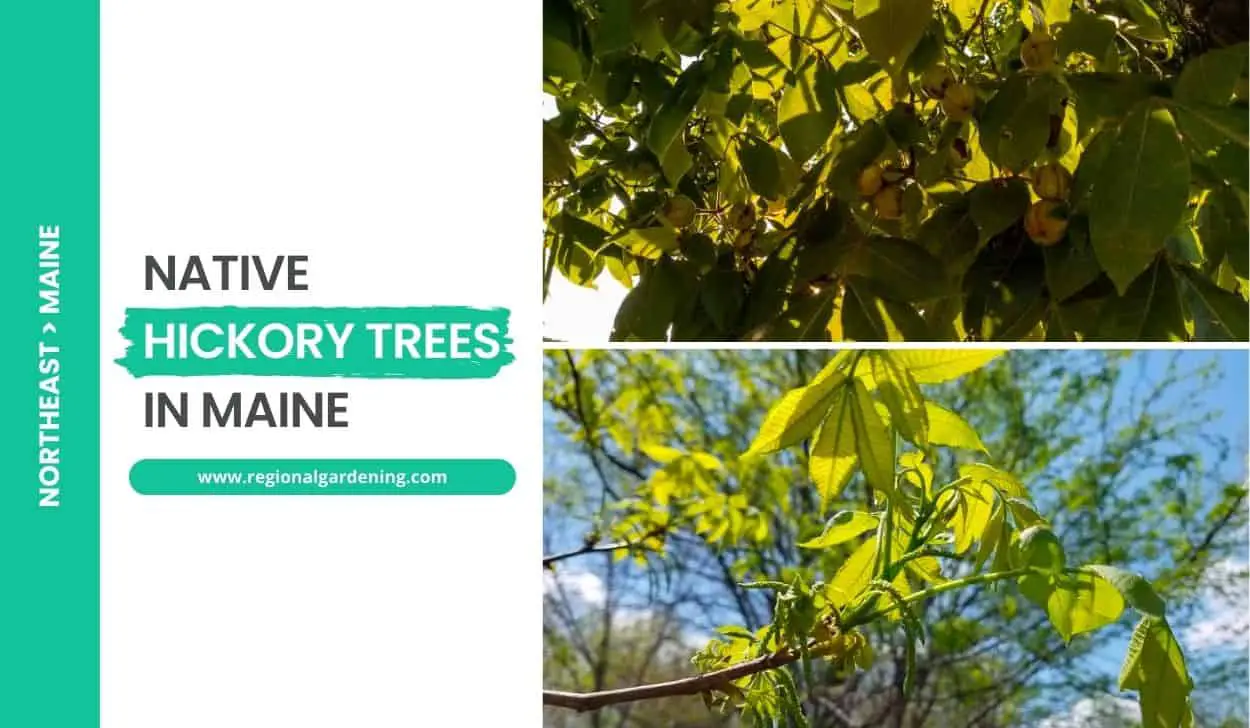
Explore Maine’s natural wonders with its native Hickory trees. These hardy and distinctive trees not only contribute to the state’s rich biodiversity but also serve a variety of practical purposes.
This article will discuss the bitternut and shagbark hickories, two of the most common native hickory trees in Maine, along with engrossing images to help with identification.
Let’s get started.
1. Bitternut Hickory
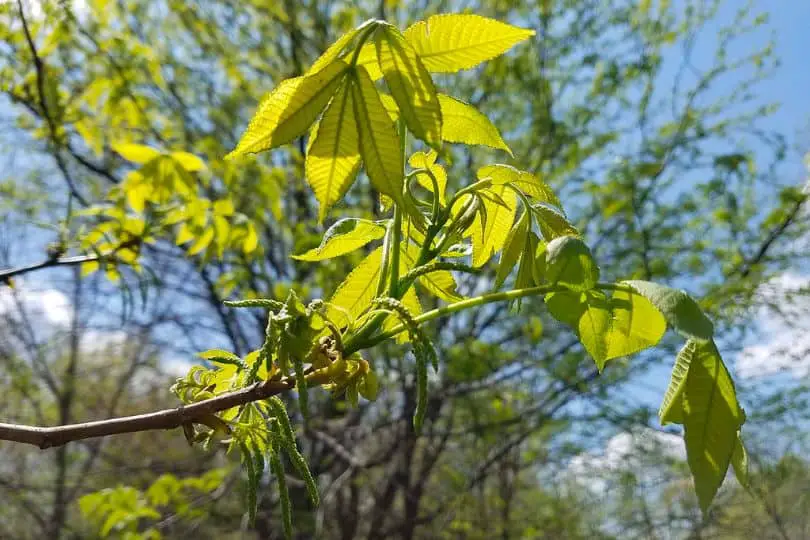
- Scientific Name: Carya cordiformis (Wangenh.) K. Koch
- Common Name(s): Bitternut Hickory
- Mature Height: 50-60 feet (15-18 meters)
- Native Region: Eastern North America
- Flowers: No flowers
- Fruit: Oval-shaped nuts with a thin husk and bitter taste
- Uses: Bitternut hickory wood is used for making furniture, flooring, tool handles, and agricultural implements.
Bitternut hickory, formally known as Carya cordiformis, is a deciduous tree that can grow to be 50 to 60 feet (15 to 18 meters) tall when mature. It is native to eastern North America, including Maine’s extreme southwestern tip. The oval-shaped nuts, thin husk, and bitter taste distinguish the tree.
The leaves of the bitternut hickory are pinnately compound, which means they are divided into leaflets that are placed along a central stalk. Each leaflet has a serrated or toothed edge and is lance-shaped. Mature tree bark is gray and heavily wrinkled.
Bitternut hickory favors damp, well-drained soils and can be found in bottomland forests, along rivers, and on floodplains. The tree thrives in similar conditions in Maine environments, so planting it near damp areas or bodies of water is perfect.
While there are no spectacular blossoms on the bitternut hickory, it does yield oval-shaped nuts with a thin husk. These nuts have a bitter flavor, therefore the name “bitternut.” Wildlife like squirrels and birds eat the nuts, which aids in seed dissemination.
It is critical to give appropriate water to bitternut hickories in Maine, especially during dry years. Adding organic mulch at the base of the tree can aid in moisture retention and temperature regulation. Regular pruning may be required to keep the ideal shape and remove any dead or damaged branches.
Bitternut hickory wood is highly prized for its strength and durability. It’s often used to make furniture, flooring, tool handles, and agricultural equipment. Although bitter, humans can eat the nuts if they are properly prepared or used in baking. They are, however, mostly devoured by wildlife.
2. Shagbark Hickory
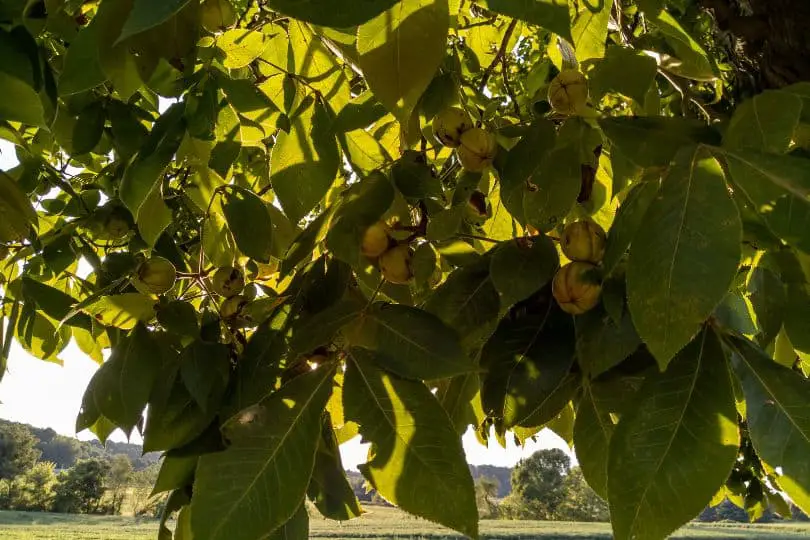
- Scientific Name: Carya ovata (Mill.) K. Koch
- Common Name(s): Shagbark Hickory
- Mature Height: Up to 70 feet (21 meters)
- Native Region: Native to North America
- Flowers: No flowers
- Fruit: Globose with a thick outer husk, the fruit is borne singly or in pairs
- Uses: The wood is strong and durable, commonly used for pallets.
Shagbark hickory (Carya ovata) is a tall and stately tree with a gradually tapering trunk that can reach heights of up to 70 feet (21 meters). It is most prevalent in southern Maine, where it grows on damp but well-drained soil. The shagbark hickory’s bark is distinctive in that it is light gray and separates into long, loose plates, giving the tree a shaggy appearance.
The leaves of the shagbark hickory are complex and alternating, ranging in length from 8 to 14 inches. The leaves usually contain five leaflets, but they can have up to seven. The three-terminal leaflets are the biggest, and the leaflet edges are serrate. There are no blooms produced by the shagbark hickory.
Another remarkable trait is the fruit of the shagbark hickory. It has a thick outer shell with deeply grooved seams. When the husk is mature, it separates along these grooves, revealing a globose fruit. The fruit’s kernel is delicious. The twigs of the shagbark hickory can be hairy or smooth, and they range in color from olive-gray to dark red-brown. The twig pith is star-shaped in cross-section, and the bud scales are hairy.
The shagbark hickory is low-maintenance in terms of upkeep. It grows well in damp but well-drained soil and is tolerant to a wide range of soil types. It prefers full sun but may tolerate moderate shade. Watering should be done regularly during dry spells, especially in the first few years following planting. Pruning is rarely required unless there are damaged or diseased branches.
Shagbark hickory wood is highly prized for its strength, durability, and flexibility. It was historically employed in the production of agricultural equipment, carriages, and wagons, particularly for wheel spokes and rims, as well as axe and tool handles. Pallets are the major application for shagbark hickory wood in current times. Because of its strength and close-grained character, it is an excellent choice for heavy-duty applications.
Common Hickory Trees In Maine – Frequently Asked Questions (FAQs)
Let’s go over some of the most commonly asked questions about the native hickory trees in Maine.
Do hickory trees grow in Maine?
Yes, hickory trees can be found in Maine. While hickory trees are not as commonly associated with Maine as they are in other parts of the country, they can still be found in the state. Hickory trees are more common in southern and western Maine, where the climate is milder and more conducive to their growth. Several hickory tree species, including the shagbark hickory and the bitternut hickory, can be found throughout the state, particularly in wooded areas and forests.
What are the uses of hickory trees in Maine?
One of their primary uses for hickory trees in Maine is lumber and woodworking due to the wood’s hardness and strength. It is highly valued for use in the manufacture of furniture, flooring, tool handles, and sports equipment such as baseball bats.
Furthermore, the hickory nuts produced by these trees provide food for wildlife such as squirrels and birds. Indigenous communities have traditionally used hickory bark to make tools and weave baskets. Hickory trees improve the aesthetics of landscapes in addition to providing shade and protection from the summer sun.
Similar Articles
- Common Spruce Trees In Maine
- Common Oak Trees In Maine
- Common Ash Trees In Maine
- Common Birch Trees In Maine
- Common Maple Trees In Maine
- Common Pine Trees In Maine
- Common Cedar Trees In Maine
- Native Cherry Trees In Maine
- Common Aspen Trees In Maine
- White Flowering Trees In Maine
Sources
The Regional Gardening team makes sure that the information in our articles is accurate by only using sources that are known to be trustworthy. Some of these sources are peer-reviewed journals from government agencies, well-known universities, and scientific research organizations.
- Forest Trees of Maine, Maine Department Of Agriculture, Conservation & Forestry
- Identify Maine’s Common Foliage Trees, Maine Foilage
- Plants for the Maine Landscape, University Of Maine Cooperative Extension.
- Gardening to Conserve Maine’s Native Landscape, University Of Maine Cooperative Extension


